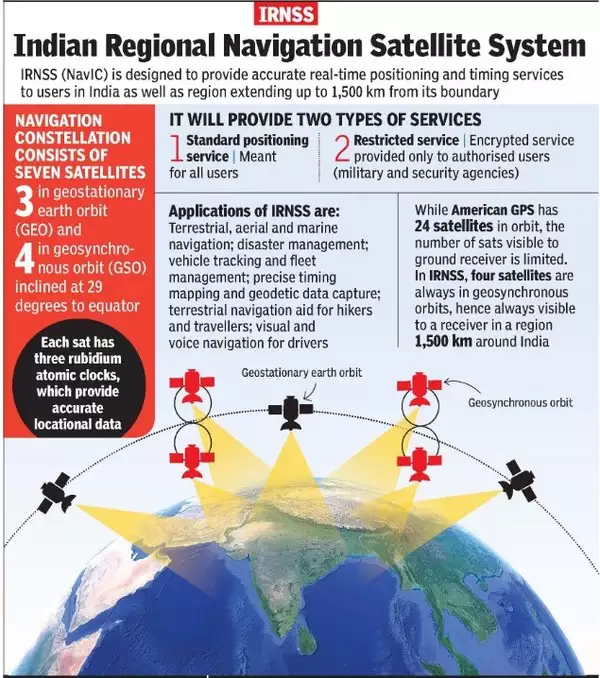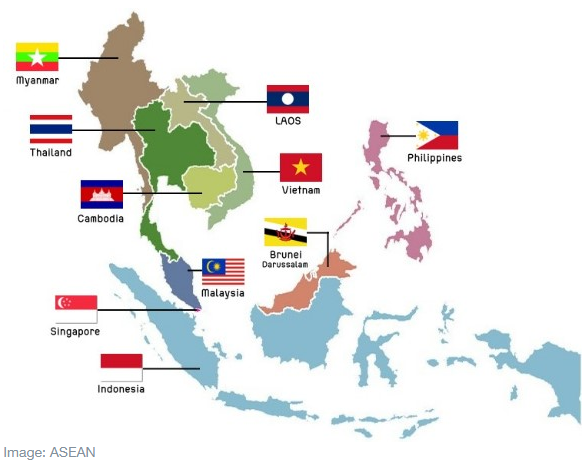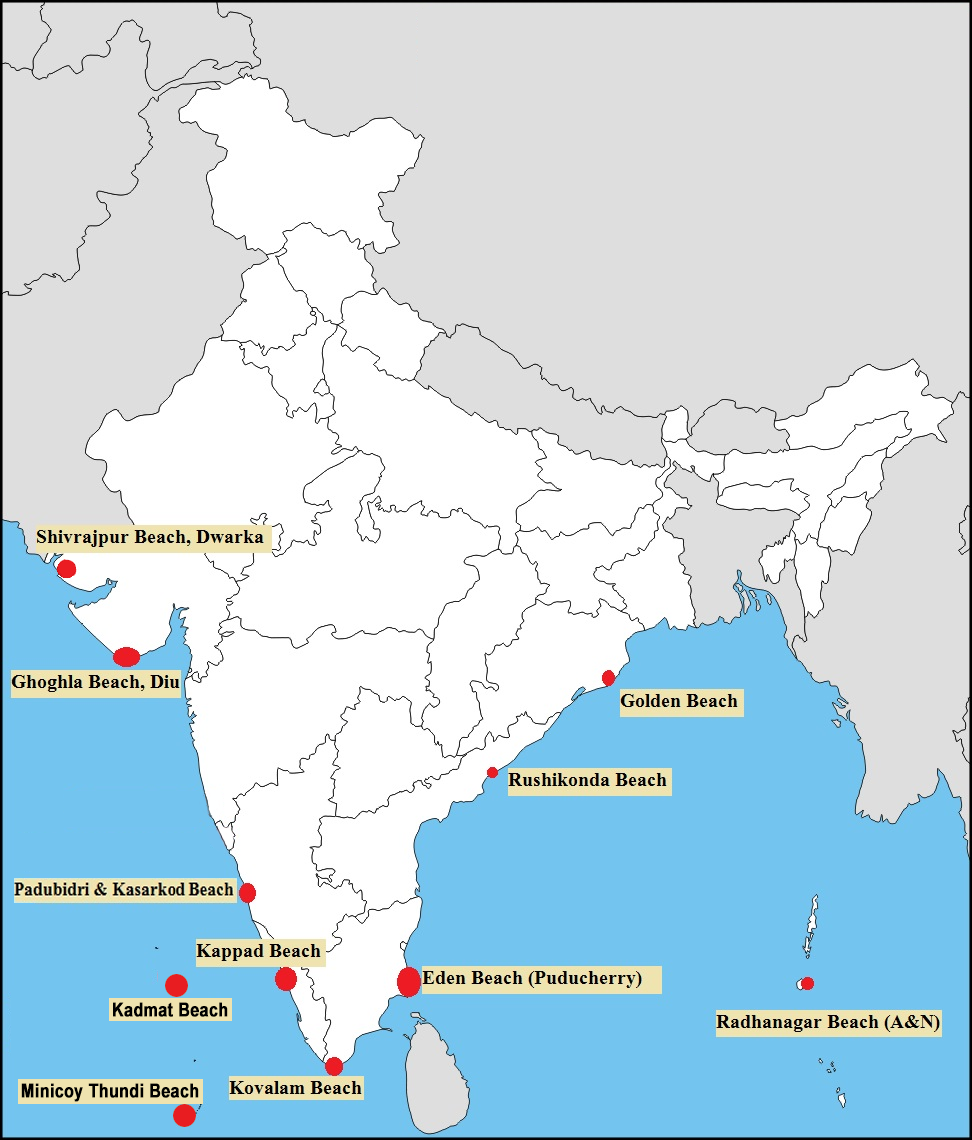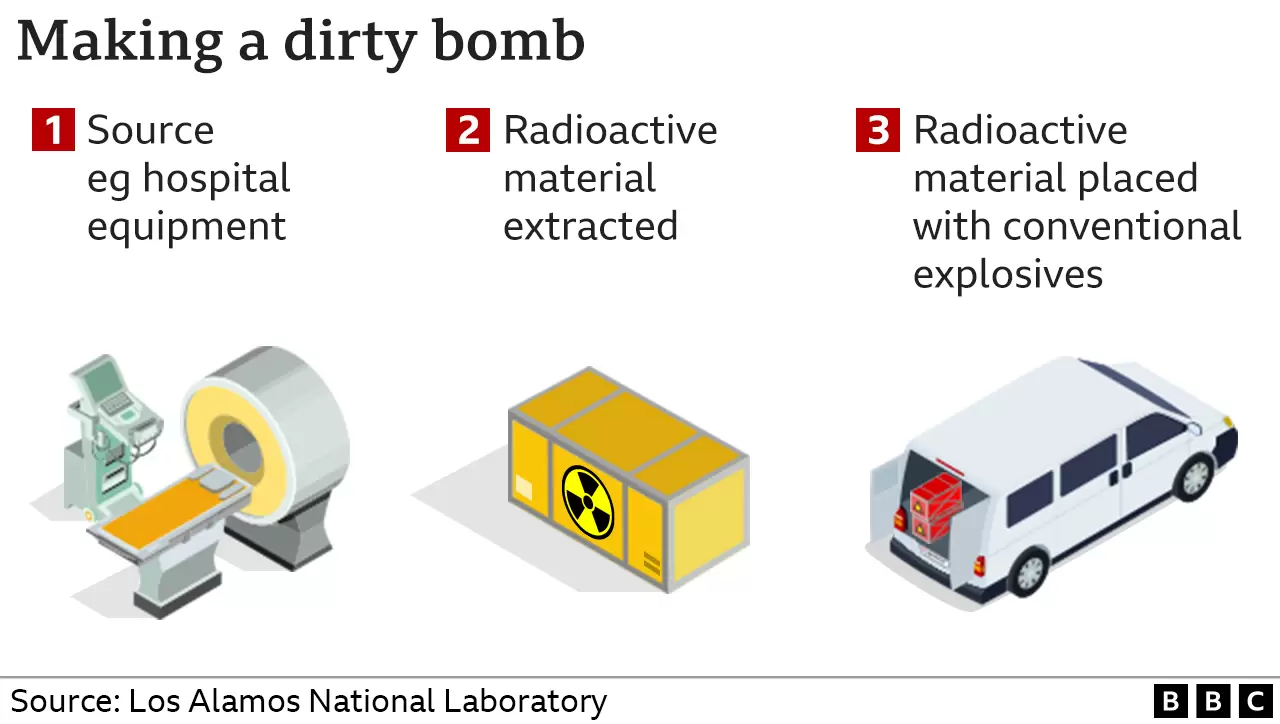Maps
Aegean Sea
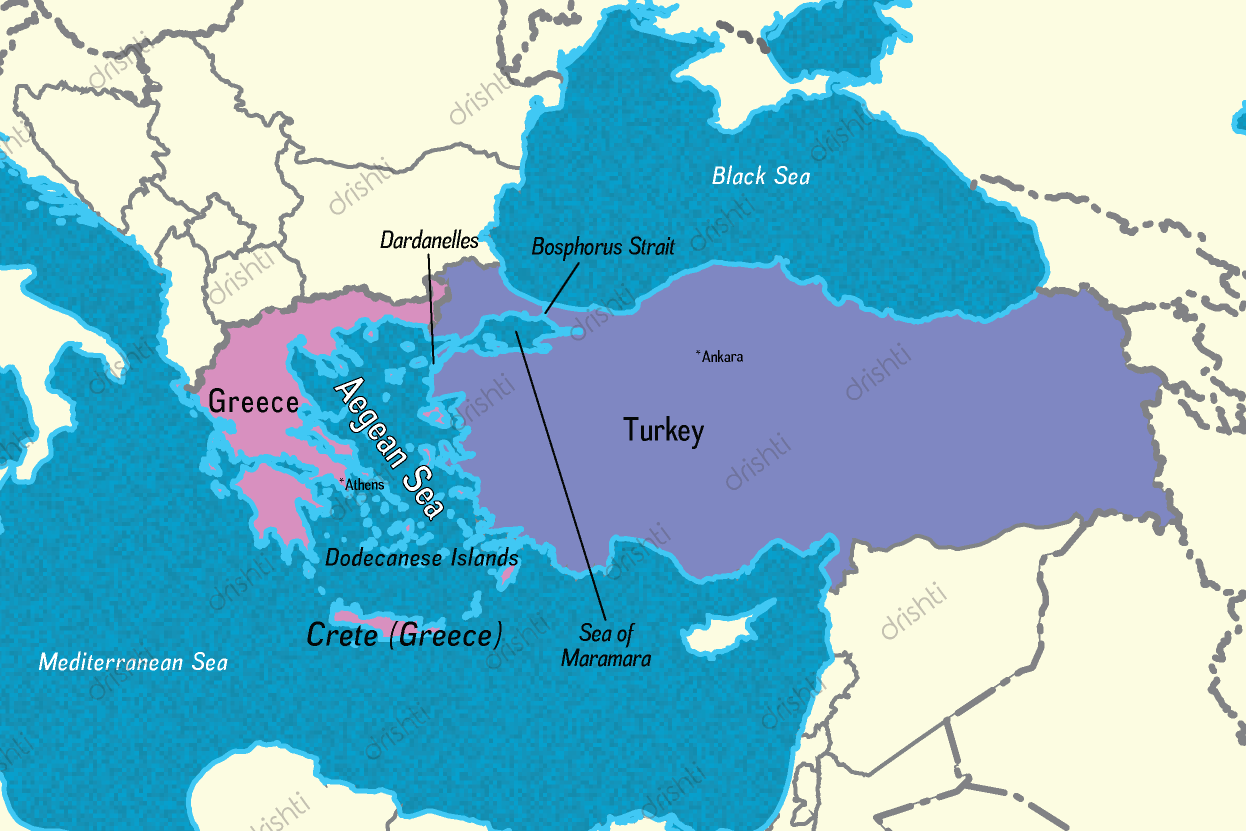 Key Points
Key Points
- Physical Geography:
- It is an arm of the Mediterranean Sea. It is located in the East Mediterranean Basin with the Greek peninsula to its west and Anatolia (consisting of the Asian side of Turkey) to its east.
- The Aegean is connected through the straits of the Dardanelles, the Sea of Marmara, and the Bosphorus to the Black Sea, while the island of Crete can be taken as marking its boundary on the south.
- Turkey-Greece Dispute:
- The Aegean Sea maritime dispute comprises three main issues: the breadth of the territorial sea; the presence of islands; and the delimitation of the continental shelves between the two States.
- Since 1936, Greece has claimed a 6 nautical-mile (nm) territorial sea. Turkey also claims a 6-nm territorial sea in the Aegean. However, the United Nations Convention on the Law of the Sea 1982 (UNCLOS) allows States to extend their territorial sea up to 12 nm from the shore.
- Greece has adopted the Convention, but Turkey has not, holding different approaches in different regions.
- Related Treaty: Treaty of Lausanne of 1923.
Indian Economy
Indian Currency Design Mechanism
For Prelims: Power of RBI and Central Government in Currency Notes and Coins Issuance
For Mains: Process of Currency Design and Printing
Why in News?
Recently, the head of a political party asked the central government to put pictures of Goddess Lakshmi and Lord Ganesh on currency notes in order to bring “prosperity” to the country.
Who is involved in the Design and Issuance of Indian Bank Notes and Coins?
- About:
- The Reserve Bank of India (RBI) and the Central Government decide the changes in the design and form of bank notes and coins.
- Any change in design of a currency note has to be approved by the RBI’s Central Board and the central government.
- Changes in the design of coins are the prerogative of the central government.
- Role of RBI in Issuing Notes:
- Section 22 of The Reserve Bank of India Act, 1934, gives RBI the “sole right” to issue banknotes in India.
- The central bank internally works out a design, which is put before the RBI’s Central Board.
- Section 25 states that “the design, form, and material of bank notes shall be such as may be approved by the Central Government after consideration of the recommendations made by the RBI’s Central Board”.
- The RBI’s Department of Currency Management, currently headed by Deputy Governor, has the responsibility of administering the core function of currency management.
- If the design of a currency note has to change, the Department works on the design and submits it to RBI, which recommends it to the central government. The government gives the final approval.
- Section 22 of The Reserve Bank of India Act, 1934, gives RBI the “sole right” to issue banknotes in India.
- Role of Central Government in minting of coins:
- The Coinage Act, 2011 gives the central government the power to design and mint coins in various denominations.
- The role of the RBI is limited to the distribution of coins that are supplied by the central government.
- The government decides on the quantity of coins to be minted on the basis of indents received from the RBI on a yearly basis.
- Coins are minted in four mints owned by the Government of India in Mumbai, Hyderabad, Kolkata and Noida.
- The Coinage Act, 2011 gives the central government the power to design and mint coins in various denominations.
What is RBI’s Currency Management System?
- RBI, in consultation with the central Government and other stakeholders, estimates the quantity of banknotes that are likely to be needed denomination-wise in a year, and places indents with the various currency printing presses for their supply.
- Two of India’s currency note printing presses (Nasik and Dewas) are owned by the Government of India; two others (Mysore and Salboni) are owned by the RBI through its wholly owned subsidiary, Bharatiya Reserve Bank Note Mudran Ltd (BRBNML).
- Notes that are received back from circulation are examined, after which those fit for circulation are reissued, while the soiled and mutilated notes are destroyed.
What are the Types of Notes Issued so far?
- Ashoka Pillar Banknotes: The first banknote issued in independent India was the Re 1 note issued in 1949. While retaining the existing design, the new banknotes replaced the portrait of King George with the symbol of the Lion Capital of the Ashoka Pillar at Sarnath in the watermark window.
- Mahatma Gandhi (MG) Series, 1996: All the banknotes of this series bear the portrait of Mahatma Gandhi on the obverse (front) side, in place of the symbol of Lion Capital of Ashoka Pillar, which was moved to the left, next to the watermark window. These banknotes contain both the Mahatma Gandhi watermark as well as Mahatma Gandhi’s portrait.
- Mahatma Gandhi Series, 2005: The “MG series 2005” notes were issued in denominations of Rs 10, Rs 20, Rs 50, Rs 100, Rs 500, and Rs 1,000. They contain some additional/ new security features as compared to the 1996 MG series. The Rs 500 and Rs 1,000 notes of this series were withdrawn w.e.f. the midnight of November 8, 2016.
- Mahatma Gandhi (New) Series, 2016: The “MGNS” notes highlight the cultural heritage and scientific achievements of the country. Being of reduced dimensions, these notes are more wallet friendly, and are expected to incur less wear and tear. The colour scheme is sharp and vivid.
UPSC Civil Services Examination Previous Year Question
Q. Consider the following statements: (2021)
- The Governor of the Reserve Bank of India (RBI) is appointed by the Central Government.
- Certain provisions in the Constitution of India give the Central Government the right to issue directions to the RBI in public interest.
- The Governor of the RBI draws his power from the RBI Act.
Which of the above statements are correct?
(a) 1 and 2 only
(b) 2 and 3 only
(c) 1 and 3 only
(d) 1, 2 and 3
Ans: (c)
Source: IE


Science & Technology
NavIC
For Prelims: ISRO, GPS, IMO, IRNSS, L Band, GLONASS, Galileo, BeiDou.
For Mains: Significance of NavIC.
Why in News?
Indian plans to expand its regional satellite navigation system NavIC (Navigation in Indian Constellation), to increase its use in the civilian sector and ships, aircraft travelling far from the country's borders.
What is NavIC?
- About:
- NavIC or the Indian Regional Navigation Satellite System (IRNSS) is designed with a constellation of 7 satellites and a network of ground stations operating 24×7.
- There are a total of eight satellites however only seven remain active.
- Three satellites in geostationary orbit and four satellites in geosynchronous orbit.
- The constellations' first satellite (IRNSS-1A) was launched on 1st July 2013 and the eighth satellite IRNSS-1I was launched in April 2018.
- With the seventh launch of the constellation's satellite (IRNSS-1G), IRNSS was renamed NavIC by India’s Prime Minister in 2016.
- It was recognised by the International Maritime Organization (IMO) as a part of the World-Wide Radio Navigation System (WWRNS) for operation in the Indian Ocean Region in 2020.
- NavIC or the Indian Regional Navigation Satellite System (IRNSS) is designed with a constellation of 7 satellites and a network of ground stations operating 24×7.
- Potential Uses:
- Terrestrial, aerial and marine navigation;
- Disaster management;
- Vehicle tracking and fleet management (especially for mining and transportation sector);
- Integration with mobile phones;
- Precise timing (as for ATMs and power grids);
- Mapping and geodetic data capture.
What is the Significance?
- It gives real time information for 2 services i.e standard positioning service open for civilian use and Restricted service which may be encrypted for authorized users like for military.
- India became one of the 5 countries having their own navigation system. So, India's dependence on other countries for navigation purposes reduces.
- It will help scientific & technological advancement in India. It is important for the country’s sovereignty and strategic requirements.
- In April 2019, the government made NavIC-based vehicle trackers mandatory for all commercial vehicles in the country in accordance with the Nirbhaya case verdict.
- Also, Qualcomm Technologies has unveiled mobile chipsets supporting NavIC
- Further with extensive coverage, one of the stated future uses of the project includes sharing of the project with the SAARC nations. This will help in integrating the regional navigation system further and a diplomatic goodwill gesture from India towards countries of the region.
What are the Issues and Intended Improvements?
- L Band:
- ISRO plans to replace at least five satellites with the improved L-Band, which would enable it to offer better global positioning services to the public as several satellites of the constellation have outlived their lives.
- Five more satellites will be launched periodically to replace the defunct satellites.
- The new satellites will have L-1, L-5 and S Band.
- L1, L2 and L5 are GPS frequencies, where L1 frequency is used to track GPS satellite location, L2 frequency is used to track the health of the GPS satellites and the L5 frequency is used to improve accuracy for civilian use such as aircraft precision.
- S band operate on a wavelength of 8-15 cm and a frequency of 2-4 GHz. Because of the wavelength and frequency, S band radars are not easily attenuated. This makes them useful for near and far range weather observation.
- ISRO plans to replace at least five satellites with the improved L-Band, which would enable it to offer better global positioning services to the public as several satellites of the constellation have outlived their lives.
- Long Code for Strategic Sector:
- Currently ISRO is providing only short code. Now, the short code has to become long code for strategic sector use so that the signal cannot be breached or spoofed or made non-available.
- It will be done so that the user base can be widened and to make it user friendly.
- Mobile Compatibility:
- Currently, the mobile phones in India haven’t been made compatible to process its signals.
- The Indian government has been pressing manufacturers to add compatibility and has set a deadline of January 2023 but media reports suggest this is unlikely before 2025.
Which are the other Navigation Systems operational in the world?
- Four global systems:
- GPS from the U.S.
- GLONASS from Russia.
- Galileo from European Union
- BeiDou from China.
- Two regional systems:
- NavIC from India
- QZSS from Japan.
What is the need for NavIC when already others are Operating?
- GPS and GLONASS are operated by defence agencies of the respective nations.
- It is possible that the civilian service can be degraded or denied.
- NavIC is an independent regional system over the Indian region and does not depend on other systems for providing position service within the service region.
- It is fully under the control of the Government of India.
Way Forward
- To make NavIC truly global like GPS, more satellites would need to be placed in an orbit closer to earth than the current constellation.
- Right now, NavIC’s reach is only 1,500 km beyond Indian territory. But for our ships and airplanes travelling beyond that we’d need satellites in Medium Earth Orbit. To make this global at some point, we can keep adding MEO satellites.
UPSC Civil Services Examination Previous Year Question
Prelims
Q. With reference to the Indian Regional Navigation Satellite System (IRNSS), consider the following statements: (2018)
- IRNSS has three satellites in geostationary and four satellites in geosynchronous orbits.
- IRNSS covers entire India and about 5500 sq. Km beyond its borders.
- India will have its own satellite navigation system with full global coverage by the middle of 2019.
Which of the statements given above is/are correct?
(a) 1 only
(b) 1 and 2 only
(c) 2 and 3 only
(d) None
Ans: (a)
Mains
Q. Why is Indian Regional Navigational Satellite System (IRNSS) needed? How does it help in navigation? (2018)
Source: TH

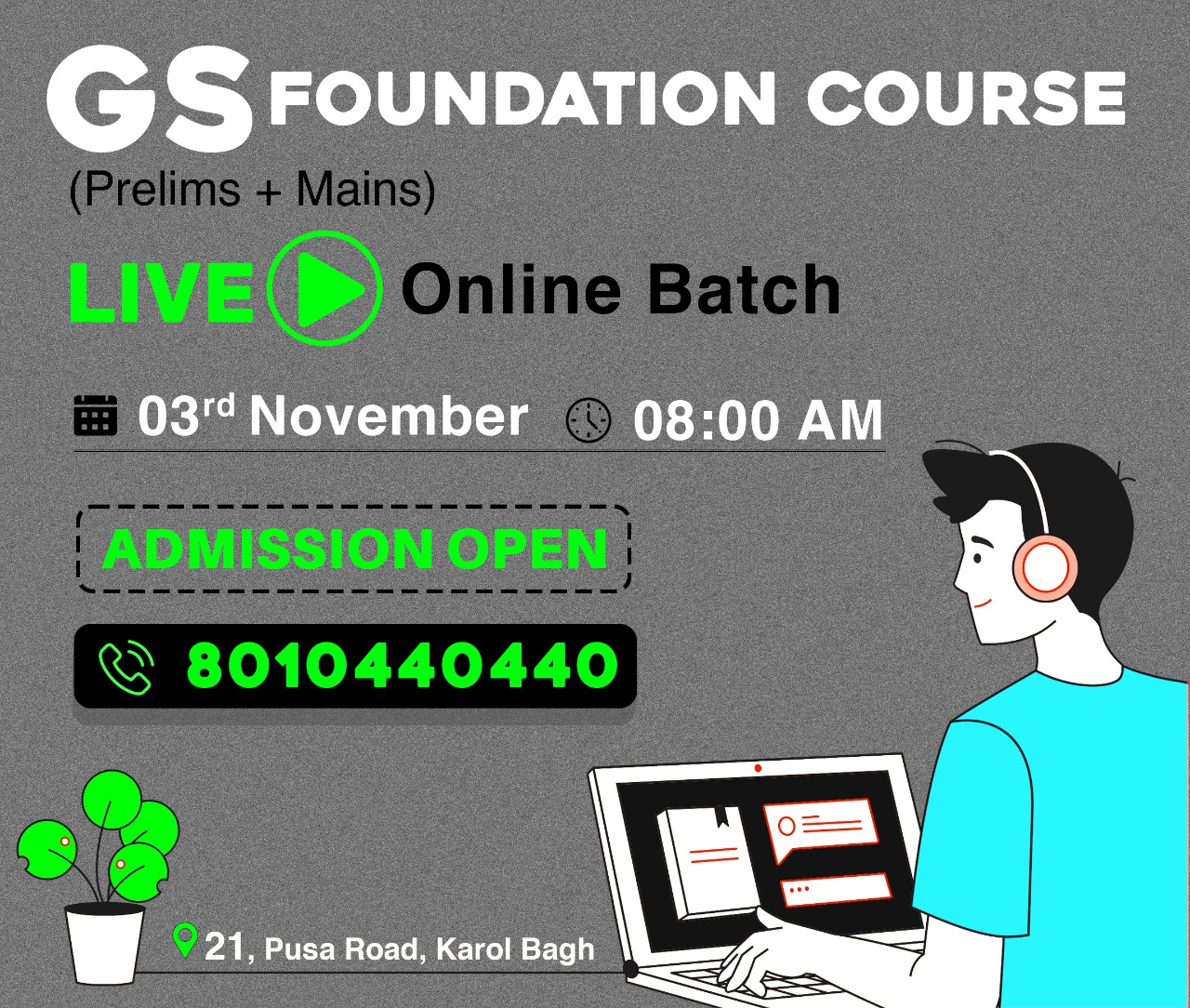
International Relations
7th ASEAN-India Ministerial Meeting
For Prelims: ASEAN, India's Act East Policy
For Mains: Groupings & Agreements Involving India and/or Affecting India's Interests
Why in News?
Recently, the 7th ASEAN-India Ministerial Meeting (AIMMAF) on Agriculture and Forestry was held virtually.
What are the Highlights of the Meeting?
- India’s Vision of keeping ASEAN:
- India reiterated its vision of keeping Association of Southeast Asian Nations (ASEAN) at the center of India's Act East Policy.
- It also emphasized mutually close regional cooperation with ASEAN to ensure sustainable and inclusive growth for agricultural development in the region.
- Steps towards Millets Production:
- Referring to the importance of millet (nutritional-cereals) as a nutritious food and the international nutritional-cereal year 2023, India urged the ASEAN member countries to support the efforts of India in increasing the production, processing, value addition and consumption of millets.
- India will promote nutritious cereal products for the health and nutrition of the people.
- Nutritious cereals help in the creation of nutrients with low resource requirements and more efficient agri-food systems.
- Referring to the importance of millet (nutritional-cereals) as a nutritious food and the international nutritional-cereal year 2023, India urged the ASEAN member countries to support the efforts of India in increasing the production, processing, value addition and consumption of millets.
- Implementation of Various Programs:
- The progress in implementation of various programs and activities under the Medium Term Action Plan of ASEAN-India Cooperation (Year 2021-2025) was reviewed.
- Cooperation in Agriculture:
- The commitment to ASEAN-India cooperation in agriculture and forestry was reaffirmed.
- Covid-19 Pandemic:
- In order to mitigate the unprecedented impact of the Covid-19 pandemic by ensuring a seamless flow of safe and nutritious agricultural products to ASEAN and India, it is necessary to take continuous measures under ASEAN-India cooperation for the implementation of post-pandemic recovery.
- India ensured the commitment to enhance India's cooperation with ASEAN in food security, nutrition, climate change adaptation, digital farming, nature-friendly agriculture, food processing, value chain, agricultural marketing and capacity building.
What is the Association of Southeast Asian Nations?
- About:
- It is a regional grouping that promotes economic, political, and security cooperation.
- It was established in August 1967 in Bangkok, Thailand with the signing of the ASEAN Declaration (Bangkok Declaration) by the founding fathers of ASEAN, namely Indonesia, Malaysia, Philippines, Singapore and Thailand.
- Its chairmanship rotates annually, based on the alphabetical order of the English names of Member States.
- ASEAN countries have a total population of 650 million people and a combined Gross Domestic Product (GDP) of USD 2.8 trillion.
- Commodity trade between India and ASEAN region has reached 98.39 billion in the period April 2021- February 2022.India’s main trading ties are with Indonesia, Singapore, Malaysia, Vietnam and Thailand.
- Members:
- ASEAN brings together ten Southeast Asian states – Brunei, Cambodia, Indonesia, Laos, Malaysia, Myanmar, the Philippines, Singapore, Thailand and Vietnam – into one organisation.
UPSC Civil Services Examination Previous Year Question (PYQ)
Prelims
Q. Consider the following countries: (2018)
- Australia
- Canada
- China
- India
- Japan
- USA
Which of the above are among the ‘free-trade partners’ of ASEAN?
(a) 1, 2, 4 and 5
(b) 3, 4, 5 and 6
(c) 1, 3, 4 and 5
(d) 2, 3, 4 and 6
Ans: (c)
Exp:
- Association of Southeast Asian Nations (ASEAN) has free trade agreements with six partners, namely the People’s Republic of China, Republic of Korea, Japan, India as well as Australia and New Zealand. Hence, 1, 3, 4 and 5 are correct.
- Therefore, option (c) is the correct answer.
Q. The term ‘Regional Comprehensive Economic Partnership’ often appears in the news in the context of the affairs of a group of countries known as (2016)
(a) G20
(b) ASEAN
(c) SCO
(d) SAARC
Ans: (b)
Exp:
- Regional Comprehensive Economic Partnership (RCEP) is a Free Trade Agreement (FTA) between the ten member states of the Association of Southeast Asian Nations (ASEAN) and the five countries (Australia, China, Japan, South Korea and New Zealand) with which ASEAN has existing FTAs.
- Therefore, option (b) is the correct answer.
Q. In the Mekong-Ganga Cooperation, an initiative of six countries, which of the following is/are not a participant/ participants? (2015)
- Bangladesh
- Cambodia
- China
- Myanmar
- Thailand
Select the correct answer using the code given below:
(a) 1 only
(b) 2, 3 and 4
(c) 1 and 3
(d) 1, 2 and 5
Ans: (c)
Exp:
- The Mekong-Ganga Cooperation (MGC) is an initiative by six countries – India and five ASEAN countries, namely, Cambodia, Lao PDR, Myanmar, Thailand and Vietnam for cooperation in tourism, culture, education, as well as transport and communications. It was launched in 2000 in Vientiane, Lao PDR.
- Both the Ganga and the Mekong are civilizational rivers and the MGC initiative aims to facilitate closer contacts among the people inhabiting these two major river basins.
- The MGC is also indicative of the cultural and commercial linkages among the member countries of the MGC down the centuries.
- Therefore, option (c) is the correct answer.
Mains
Q. Evaluate the economic and strategic dimensions of India’s Look East Policy in the context of the post-Cold War international scenario. (2016)
Source: PIB

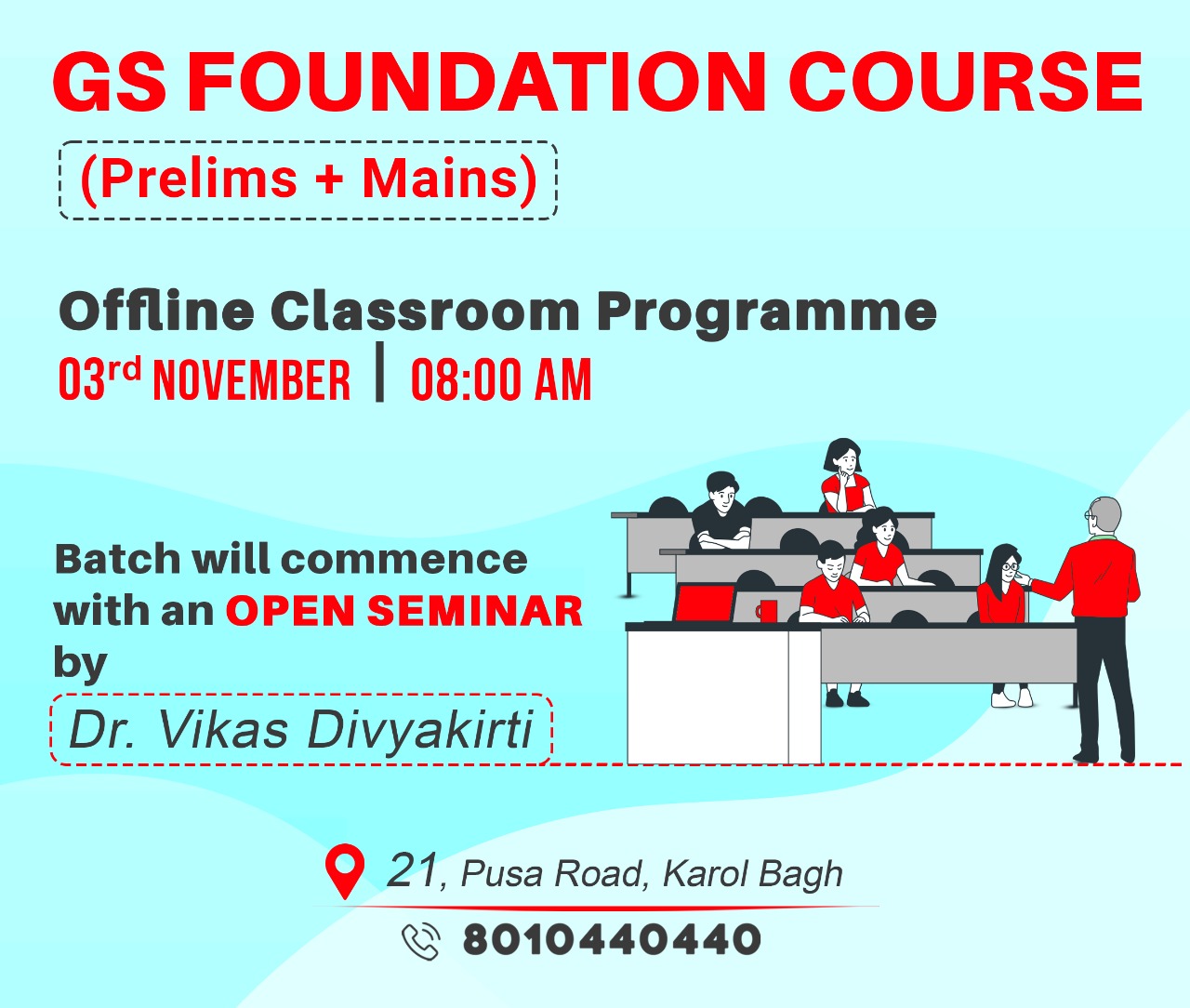
International Relations
India-UK Relation
For Prelims: Indo-pacific, FTA
For Mains: Effect of policies and politics of developed and developing countries on India’s interests
Why in News?
Recently, Rishi Sunak took charge as the 57th Prime Minister of the United Kingdom.
- He is the country’s third PM in 50 days after first Boris Johnson and then Liz Truss was forced from office by a rebellion within the ruling Conservative Party.
What are the Opportunities for India-UK ties under PM Rishi Sunak?
- It is an opportunity for India and the U.K to work closely together on global issues and implement the roadmap 2030 for bilateral relations with the elevation of a person of Indian origin as prime minister of the U.K.
- His vision for India-U.K. bilateral ties has gone beyond the opportunity for the U.K. to sell things in India, wanting Britain to also "learn from India".
- A Free Trade Agreement between India and the UK is expected to enhance economic growth and prosperity by: increasing import and export flows; increasing investment flows (both outward and inward); enhancing productivity through a more efficient allocation of resources; and greater openness to international competition.
Why is the Indo-UK Partnership Important?
- For UK: India is a key strategic partner for the UK in the Indo-Pacific both in terms of market share and defence, as was underscored by the signing of the Defence and International Security Partnership between India and the UK in 2015.
- For Britain, a successful conclusion of an FTA with India would provide a boost to its ‘Global Britain’ ambitions as the UK has sought to expand its markets beyond Europe since Brexit.
- Britain has been trying to seize opportunities in the growing economies of the Indo-Pacific to cement its place on the global stage as a serious global actor.
- The British would be better able to achieve this goal with good bilateral relations with India.
- For India: The UK is a regional power in the Indo-Pacific as it possesses naval facilities in Oman, Singapore, Bahrain, Kenya, and British Indian Ocean Territory.
- The UK has also confirmed USD 70 million of British International Investment funding to support the usage of renewable energy in India, which will help in building renewable energy infrastructure and developing solar power in the region.
- India has sought easy market access for Indian fisheries, pharma, and agricultural products besides duty concession for labour-intensive exports.
What are the Current Major Bilateral Issues between the Both Countries?
- Extradition of Indian Economic Offenders:
- The issue is the extradition of Indian economic offenders who are presently seeking shelter in Britain and using the legal system to their advantage.
- Offenders like Vijay Mallya, Nirav Modi and others have long taken shelter under the British system despite clear cut Indian cases against them which warrant extradition.
- Umbilical link between the British and Pakistani Deep State:
- This legacy of the long-gone British Raj in the sub-continent allows Britain to box in a higher weight category with the help of Pakistan on imperial follies of Jammu and Kashmir.
- The presence of a large Muslim community from the sub-continent in the UK, particularly from areas like Mirpur of Pakistan-occupied Kashmir adds to dissonance apart from the trap of vote bank politics.
- Non-Acceptance of White Britain:
- The unacceptance of white Britain particularly its media of the rise of India as a global power is another issue.
- India under the current Prime Minister has left behind Britain as the fifth largest economy in GDP terms and is on the way up.
- There is no difference between a modern and confident Indian and a British colonial Indian in terms of skin colour or the imperial legacy of the British Empire.
- The unacceptance of white Britain particularly its media of the rise of India as a global power is another issue.
What is the Distinction between the British and Indian Parliamentary System?
- The parliamentary system of government in India is largely based on the British parliamentary system. However, it never became a replica of the British system and differs in the following respects:
- India has a republican system in place of the British monarchical system. In other words, the Head of the State in India (that is, President) is elected, while the Head of the State in Britain (that is, King or Queen) enjoys a hereditary position.
- The British system is based on the doctrine of the sovereignty of Parliament, while the Parliament is not supreme in India and enjoys limited and restricted powers due to a written Constitution, federal system, judicial review and fundamental rights.
- In Britain, the prime minister should be a member of the Lower House (House of Commons) of Parliament. In India, the prime minister may be a member of any of the two Houses of Parliament.
- Usually, the members of Parliament alone are appointed as ministers in Britain. In India, a person who is not a member of Parliament can also be appointed as minister, but for a maximum period of six months.
- Britain has the system of legal responsibility of the minister while India has no such system. Unlike in Britain, the ministers in India are not required to countersign the official acts of the Head of the State.
- ‘Shadow cabinet’ is a unique institution of the British cabinet system. It is formed by the opposition party to balance the ruling cabinet and to prepare its members for future ministerial office. There is no such institution in India.
Way Forward
- The profound ties of culture, history and language already give the UK a potentially strong foundation upon which to further deepen its relationship with India.
- With a whole new set of circumstances, India and Britain should recognise that they both need each other to achieve their larger goals.
UPSC Civil Services Examination Previous Year Question
Prelims
Q. We adopted parliamentary democracy based on the British model, but how does our model differ from that model? (2021)
- As regards legislation, the British Parliament is supreme or sovereign but in India, the power of the Parliament to legislate is limited.
- In India, matters related to the constitutionality of Amendment of an Act of the Parliament are referred to the Constitution Bench by the Supreme Court.
Select the correct answer using the code given below.
(a) 1 only
(b) 2 only
(c) Both 1 and 2
(d) Neither 1 nor 2
Ans: (c)
Mains
Q. The judicial systems in India and the UK seem to be converging as well as diverging in recent times. Highlight the key points of convergence and divergence between the two nations in terms of their judicial practices. (2020)
Source: TH


Biodiversity & Environment
Blue Flag Certification
For Prelims: UNEP, UNWTO, Foundation for Environmental Education (FEE), IUCN.
For Mains: Blue Flag certification and its Significance.
Why in News?
Recently, the Blue Flag certification has been accorded to two new beaches - Minicoy Thundi Beach and Kadmat Beach- both in Lakshadweep.
- This takes the number of beaches certified under the Blue Flag certification to 12.
What is Blue Flag Certification?
- About:
- It is an internationally recognised eco-label that is accorded based on 33 criterias. These criterias are divided into 4 major heads namely,
- Environmental education and information
- Bathing water quality
- Environmental management
- Conservation and safety services in the beaches
- Blue Flag beaches are considered the cleanest beaches of the world. It is an eco-tourism model endeavouring to provide the tourists/beachgoers clean and hygienic bathing water, facilities, a safe and healthy environment and sustainable development of the area.
- It is accorded by the international jury composed of eminent members - United Nations Environment Programme (UNEP), United Nations World Tourism Organisation (UNWTO), Denmark-based NGO Foundation for Environmental Education (FEE) and International Union for Conservation of Nature (IUCN).
- On the lines of Blue Flag certification, India has also launched its own eco-label BEAMS (Beach Environment & Aesthetics Management Services).
- It is an internationally recognised eco-label that is accorded based on 33 criterias. These criterias are divided into 4 major heads namely,
- Other 10 Beaches which have Received the Certification:
- Shivrajpur (Gujarat)
- Ghoghla (Daman & Diu)
- Kasarkod (Karnataka)
- Padubidri beach (Karnataka)
- Kappad (Kerala)
- Rushikonda (Andhra Pradesh)
- Golden beach (Odisha)
- Radhanagar beach (Andaman and Nicobar)
- Kovalam (Tamil Nadu)
- Eden (Puducherry)
What is BEAMS?
- Beach Environment & Aesthetics Management Services comes under ICZM (Integrated Coastal Zone Management) project.
- This was launched by the Society of Integrated Coastal Management (SICOM) and the Union Ministry of Environment, Forest and Climate Change (MoEFCC).
- The objectives of BEAMS program are to:
- Abate pollution in coastal waters,
- Promote sustainable development of beach facilities,
- Protect & conserve coastal ecosystems & natural resources,
- Strive and maintain high standards of cleanliness,
- Hygiene & safety for beachgoers in accordance with coastal environment & regulations.
- It has helped in saving 1,100 ml/year of municipal water through recycling; educating around 1,25,000 beachgoers about responsible behaviour at the beaches; providing alternate livelihood opportunities to 500 fishermen families through pollution abatement, safety and services and has also increased footfall for recreation activities at the beaches by approximately 80% leading to economic development.
Source: IE


Important Facts For Prelims
Glaciers in the Alps are Melting Faster than Ever
Why in News?
- A new study revealed that, in 2022 Switzerland’s glaciers have lost an average of 6.2% of their ice.
What are the Findings?
- Saharan Sand and a Huge Heatwave:
- Across the Alps, the preceding winter had very limited snowfall and therefore glaciers were not well insulated against the forthcoming summer melt season.
- Spring was particularly harsh as natural atmospheric weather patterns carried Saharan dust to Europe and blanketed the Alpine landscape.
- Since dust absorbs more solar energy than snow the now orange-tinted snow melted faster.
- A major heat wave saw temperature records breaking across Europe, with parts of the UK reaching 40° Celsius for the first time.
- The last time glaciers had an extreme melt season was in 2003, when 3.8 % of glacier ice melted across Switzerland.
- Unprecedented Alps Glacier Melt:
- The extent of glacier melting depends on the altitude at which it is located, the steeper the glacier tongue is the heavier it is covered with debris.
- In Switzerland, these glacial meltwaters are used for hydropower.
- Austrian glaciers have also lost more glacial ice in 2022 than they have in 70 years of observations and therefore it is quite clear that severe melt has been the norm in 2022.
- So, one consequence is that melting glaciers help to compensate for low rainfall in times of drought, filling reservoirs to supply the nation’s energy supply.
- Melting glaciers have created more than 1,000 new lakes across the mountains.
- This year, for the first time ever, the frozen ground (Permafrost) that binds rocks together — was thawing and causing almost constant rockfalls.
What are Alps?
- About:
- The Alps emerged during the Alpine orogeny (mountain-building event), an event that began about 65 million years ago as the Mesozoic Era was drawing to a close.
- Alps are young fold mountains with rugged relief and high conical peaks.
- They are the most prominent of western Europe’s physiographic regions. Some 750 miles long and more than 125 miles wide at their broadest point between Garmisch-Partenkirchen, Germany, and Verona, Italy, the Alps cover more than 80,000 square miles.
- The Alps extend north from the subtropical Mediterranean coast near Nice, France, to Lake Geneva before trending east-northeast to Vienna, Austria. There they touch the Danube River and meld with the adjacent plain.
- Because of their arclike shape, the Alps separate the marine west-coast climates of Europe from the Mediterranean areas of France, Italy, and the Balkan region.
- Countries Covered:
- The Alps form part of France, Italy, Switzerland, Germany, Austria, Slovenia, Croatia, Bosnia and Herzegovina, Montenegro, Serbia, and Albania.
- Only Switzerland and Austria can be considered true Alpine countries.
- Important Peaks:
- Mont Blanc is the highest peak in the Alps and in Europe, reaching a lofty 4,804 meters above sea level. It is located in the Graian Alps and lies within France, Switzerland, and Italy.
- Monte Rosa is a massif (a compact group of mountains) consisting of several peaks. The highest peak in this range (Dufourspitze) has an elevation of 4,634 meters, claiming the title of Switzerland’s highest peak.
- Dom, which is located near Monte Rosa, Dom stands at 4,545 meters and is known as one of the “easier” tall peaks in the Alps to summit because of it’s straightforward routes.
- Other major peaks are Liskamm, Weisshorn, Matterhorn, Dent Blanche, Grand Combin etc.
UPSC Civil Services Examination Previous Year Question
Q. How will the melting of Himalayan glaciers have a far-reaching impact on the water resources of India? (2020)
Source: DTE


Important Facts For Prelims
CCI Penalty on Google
Why in News?
Recently, the Competition Commission of India (CCI) has imposed a penalty of Rs. 936.44 crores on Alphabet-owned Google for “abusing its dominant position” in markets related to the Android mobile device ecosystem.
What is the Issue?
- The CCI ordered an investigation into Google Unfair Business Practices in 2019 after consumers complained about Android-based smartphones.
- The allegations against Google were based on two agreements between Original Equipment Manufacturers (OEMs) of Android OS and Google — the Mobile Application Distribution Agreement (MADA) and the Anti-Fragmentation Agreement (AFA).
- The CCI stated that Google contravened competition law due to mandatory pre-installation of the entire Google Mobile Suite (GMS) under MADA and there was no option to uninstall the same.
- GMS is a collection of Google applications and Application Programming Interface (APIs) that help support functionality across devices. GMS includes Google’s key offerings such as Google Search, Google Chrome, YouTube, Play Store, and Google Maps.
- This action of Google amounted to imposition of unfair conditions on the device manufacturers and thereby violated Section 4 of the competition Act.
- Section 4 of the Competition Act is related to abuse of dominant position.
What is the Competition Commission of India (CCI)?
- About:
- Competition Commission of India (CCI) is a statutory body of the Government of India responsible for enforcing the Competition Act, 2002, it was duly constituted in March 2009.
- The Monopolies and Restrictive Trade Practices Act, 1969 (MRTP Act) was repealed and replaced by the Competition Act, 2002, on the recommendations of the Raghavan committee.
- Composition:
- The Commission consists of one Chairperson and six Members who shall be appointed by the Central Government.
- The commission is a quasi-judicial body which gives opinions to statutory authorities and also deals with other cases. The Chairperson and other Members shall be whole-time Members.
- Eligibility Criteria of Members of CCI:
- The Chairperson and every other Member shall be a person of ability, integrity and standing and who, has been, or is qualified to be a judge of a High Court, or, has special knowledge of, and professional experience of not less than fifteen years in international trade, economics, business, commerce, law, finance, accountancy, management, industry, public affairs, administration or in any other matter which, in the opinion of the Central Government, may be useful to the Commission.
What is the Competition Act, 2002?
- The Competition Act was passed in 2002 and has been amended by the Competition (Amendment) Act, 2007. It follows the philosophy of modern competition laws.
- The Act prohibits anti-competitive agreements, abuse of dominant position by enterprises and regulates combinations (acquisition, acquiring of control and M&A), which causes or likely to cause an appreciable adverse effect on competition within India.
- In accordance with the provisions of the Amendment Act, the Competition Commission of India and the Competition Appellate Tribunal have been established.
- Government replaced Competition Appellate Tribunal (COMPAT) with the National Company Law Appellate Tribunal (NCLAT) in 2017.
Source: TH


Important Facts For Prelims
Dirty Bomb
Why in News?
- Recently, Russia intends to raise at the United Nations Security Council its accusation that Ukraine is planning a “dirty bomb” attack.
What is a Dirty Bomb?
- About:
- A “dirty bomb” is a dispersion device containing radioactive material – possibly uranium, but more likely low-grade materials such as caesium-137 or other radioactive materials in common use.
- It doesn't need to contain highly refined radioactive material, as is used in a nuclear bomb. Instead, it could use radioactive materials from hospitals, nuclear power stations or research laboratories.
- This makes them much cheaper and quicker to make than nuclear weapons.
- For Example: They can also be carried in the back of a vehicle.
- Concerns:
- The immediate health impact would probably be limited, since most people in an affected area would be able to escape before experiencing lethal doses of radiation.
- However, the radioactive dust and smoke spread farther away could be dangerous to health if it is inhaled. Because people cannot see, smell, feel, or taste radiation.
- The economic damage could be massive from having to evacuate urban areas or even abandon whole cities.
- The immediate health impact would probably be limited, since most people in an affected area would be able to escape before experiencing lethal doses of radiation.
Source: TH



